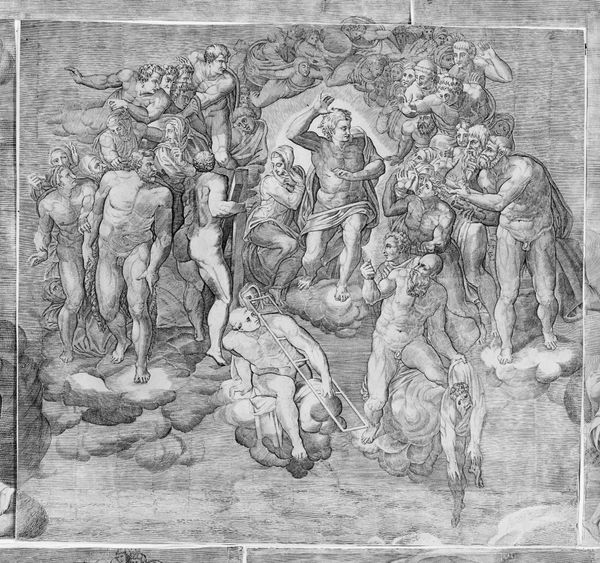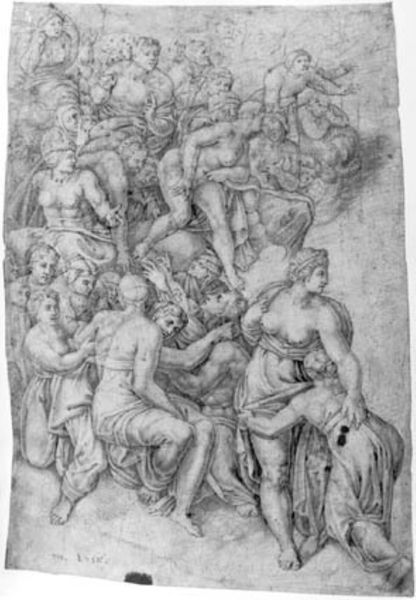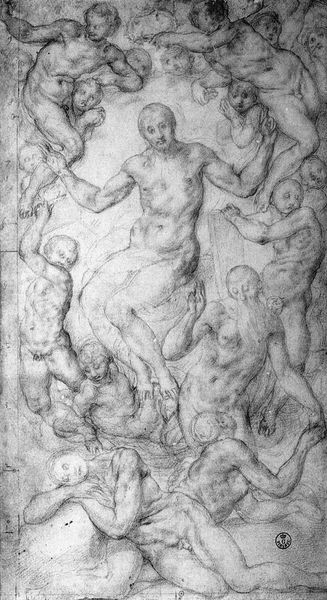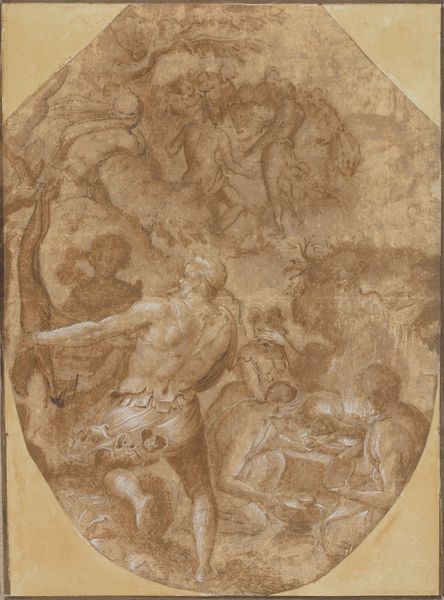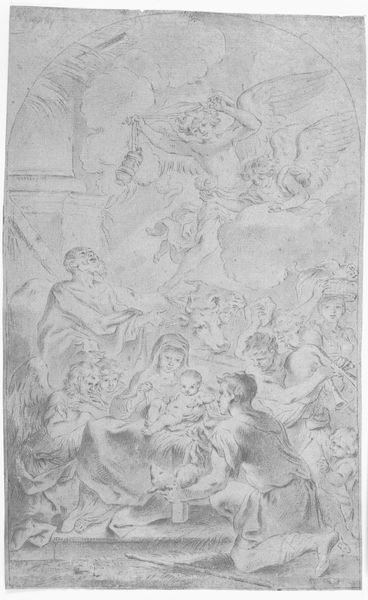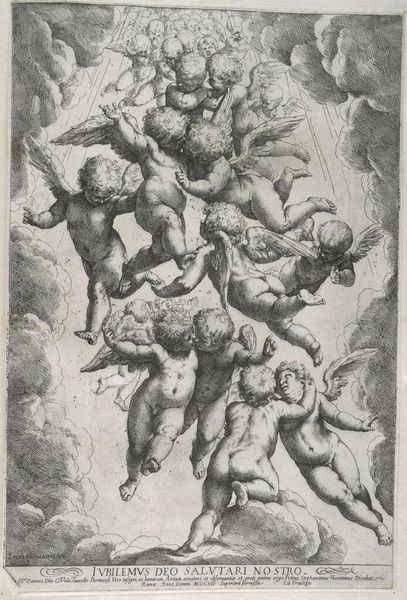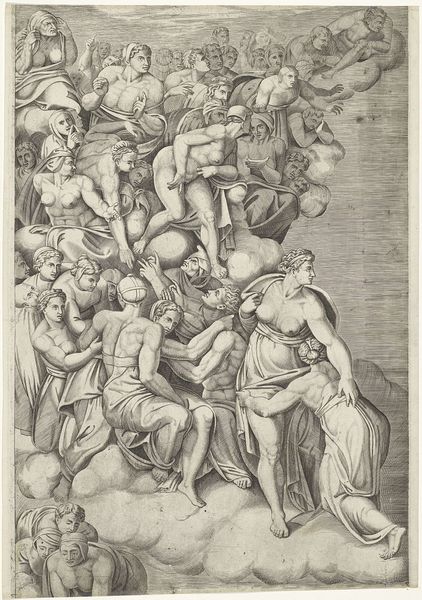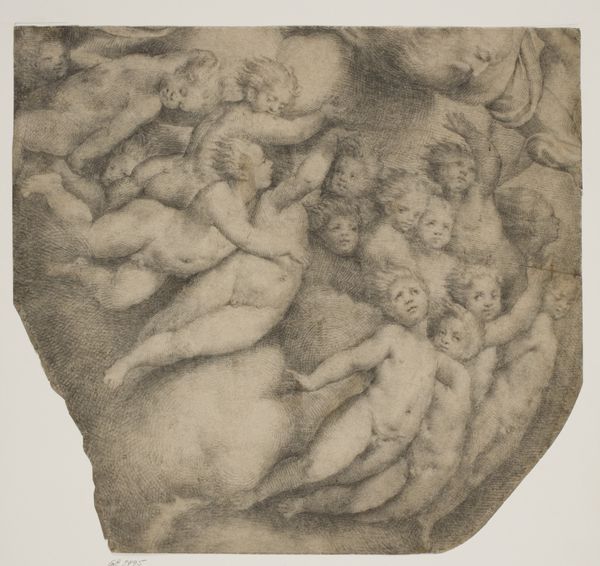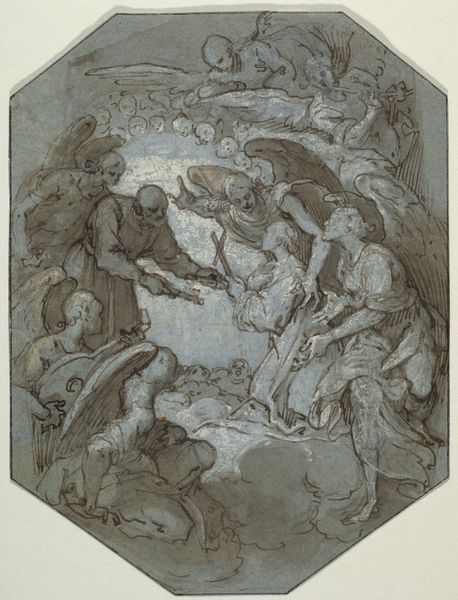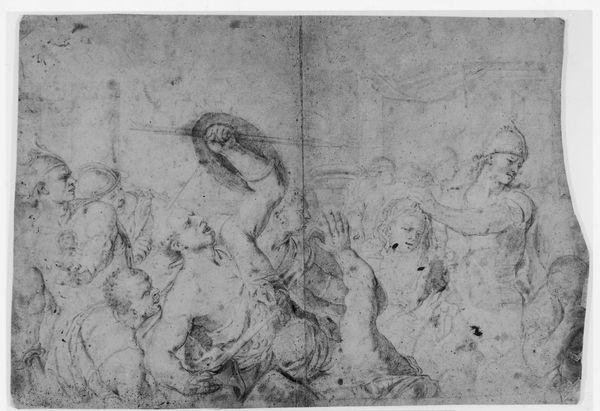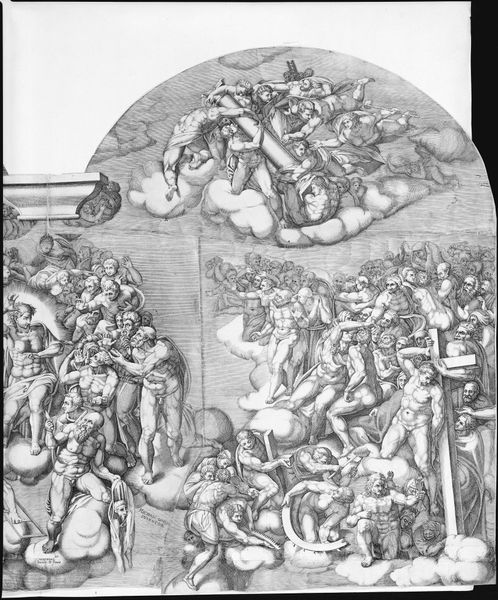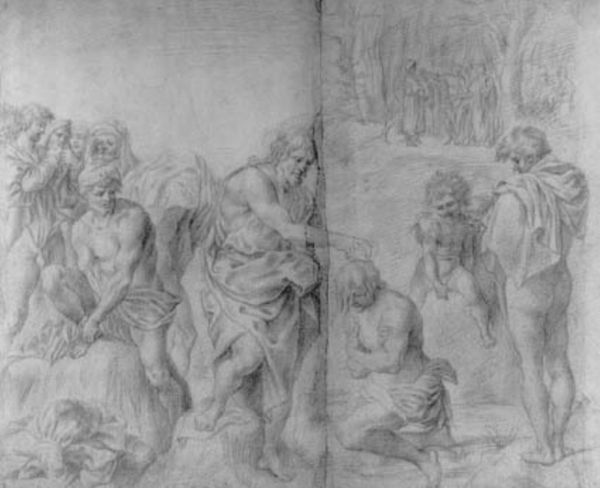
The damned being loaded into Charon's boat from the Last Judgement, Sistine Chapel 18th century
0:00
0:00
drawing, charcoal
#
drawing
#
charcoal drawing
#
figuration
#
11_renaissance
#
charcoal
#
history-painting
#
charcoal
#
italian-renaissance
Dimensions: 323 mm (height) x 256 mm (width) (bladmaal)
Curator: This charcoal drawing, made in the 18th century by an anonymous artist, is entitled "The damned being loaded into Charon's boat from the Last Judgement, Sistine Chapel," and it’s currently held here at the SMK. Editor: The composition feels almost chaotic at first glance, a flurry of muscular bodies rendered in shades of grey, all struggling together in a turbulent mass. There's a real sense of dread emanating from it. Curator: The drawing certainly captures a key moment of drama. One is struck by the sheer dynamism inherent in the figures' poses—torsos twisted, limbs flailing. The anonymous artist's skill in modeling light and shadow truly conveys the palpable sense of strain and desperation. Editor: Yes, desperation definitely resonates, and I can't help but read this depiction of souls being ferried across to the underworld through a political lens. Are we seeing the social anxieties of the time mirrored here, a fear of the unknown and unequal power structures manifesting in artistic form? The weight and suffering of the figures can't be ignored when thinking about political power in 18th century Europe. Curator: Well, looking more precisely at the visual language used, one sees a mastery of line and form that's undeniably rooted in the Renaissance tradition. The way the artist articulates the musculature, for example, references a specific aesthetic lineage. We should note how the figures conform to idealized proportions and poses, elevating even suffering to the realm of art. Editor: And what is the meaning of such ‘elevation’, when suffering is anything but elevated? The artist’s act of representing such a scene has its own agency. What statements is this artist making in this particular drawing about the meaning of justice and salvation at a pivotal moment in modern history? I think we have to keep asking questions about such portrayals. Curator: Perhaps. Though analyzing it closely shows this work stands alone through formal composition. The artist compels us to behold its power and to analyze and celebrate art history. Editor: Art makes us see. It forces us to ask the hard questions to examine our humanity. I thank the artist, then, for beginning this journey with us.
Comments
No comments
Be the first to comment and join the conversation on the ultimate creative platform.
